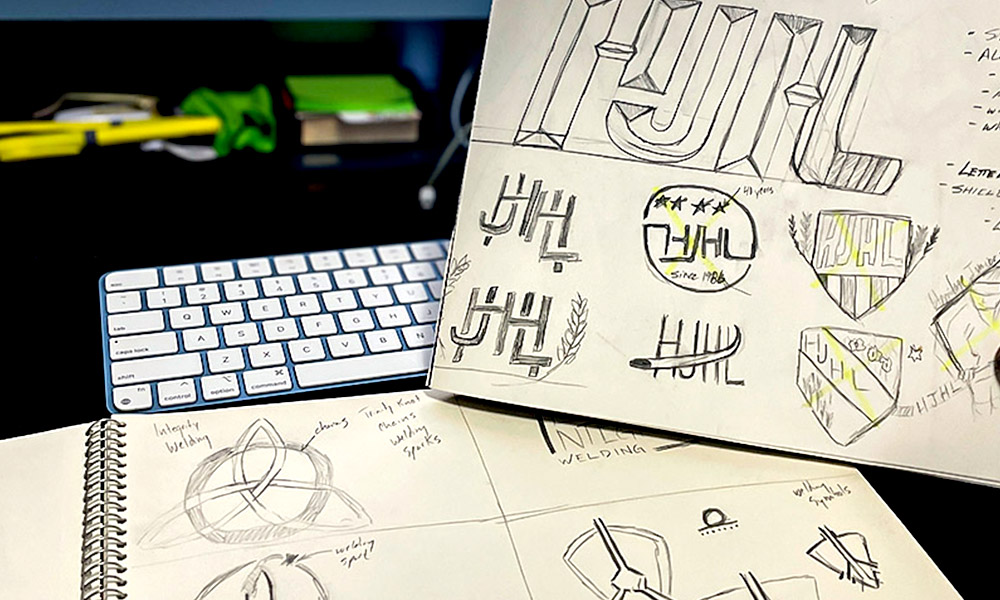Have you finally decided to take the plunge and become that new startup company? Do you have a new product, project or event you will be releasing in the near future? One of the first things that you should start thinking about is your logo. Your logo becomes the undeniable identity of your company or project for years to come. It will be the first thing your customers associate with your product or company. So it needs to deliver your marketing message as quickly and efficiently as possible. With that in mind, this edition of “Getting Graphic” will examine some of the most important attributes I focus on when I have been asked to create a logo.
1. What things actually need a logo?
Before I look at what to think about during the design process, let’s examine what situations actually call for a logo. The simple answer is EVERYTHING…..well most everything. Whether it be a new company, a new product or new product, you should always consider the possibility that a logo will be required. The easiest way to determine if a logo is required is by answering three simple questions:
- What are my advertising/marketing goals?
- What type of marketing materials do I plan to produce?
- Do my competitors’ products/projects/businesses have a logo?
Answers to these questions will give you a strong understanding of what is required. I would say 9.9875 times out of 10, a logo would be a necessity, as it creates instantaneous: brand identity, recognition, professionalism and consistency. There are times when a logo is not necessary but, in those cases, you must still properly brand your company or product. Consistency across your marketing strategy will always be important, whether a logo is involved or not.
2. What is my client’s business?
Research is always key prior to starting any project and graphic design is not any different, in fact, it might be even more important. A proper understanding of the market’s social, educational and financial background will provide much-needed direction in their logo design. Knowing who their audience will be and what their company represents allows me to select the right shapes, colours, fonts, lines and symbols.
3. Logo Design Process
When I begin designing, I follow a similar process for each of the logos:
- Minimalistic Approach: This means, editing both ideas and the design. Removing all the excessive and unnecessary elements, as they only add clutter and confusion. The minimalistic approach ensures a simple logo that people can identify instantly at a glance.
- Unique Thinking & Finding Inspiration: Designing a logo for a trucking company with a truck or an Eagle sports team logo with an eagle head isn’t memorable. It takes a different type of thinking in order to create a unique logo. It is important to find inspiration that can help you find a unique approach to the design. I spent a lot of my downtime looking around the internet or just driving around constantly looking for inspiration for any projects I may have in the future. The best example of this is the secondary logo I designed for the Oyen Eagles (found here). By using the idea of the eagle feather to create the ‘O’ it gave a different approach to the standard sports logo design.
- Start in Black & White and Ensuring Scalability: Although colour choices are important (we will discuss that later), I first find out if a logo looks like a memorable design in black and white. If the logo doesn’t impress me, I make alteration it until I’m satisfied. In addition, it is important to scale the design both up and down. Eventually, every logo is used across all different forms of media, including billboards, packaging design, business cards, and newspapers so it’s important to guarantee the logo will hold its integrity across them all.
- Applying Colour, Supporting Text and Finishes: Once the client is happy with the black and white design the process of adding colour(s), supporting text and finishing touches to produce the finished product. When talking about colours – your branding and desired message are the most important factors. A great article by 99designs.ca (https://99designs.ca/blog/tips/logo-color-meanings/) explains the meanings of each colour and how they apply in the logo design process. With that and the research of the client’s business and customers in tow, I gradually added colour to the design and supporting type.
There are thousands of businesses competing in the market to draw the attention of a limited number of customers. The successful companies are the ones that successfully create a unique identity for itself. It is my job as a graphic designer to assist these companies create this identity and turn their logos into a marketing tool.
